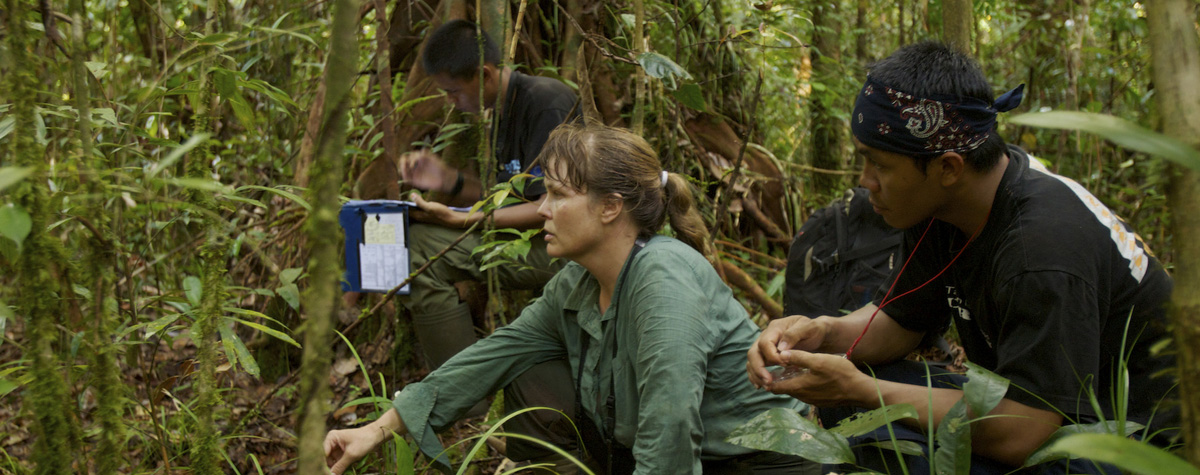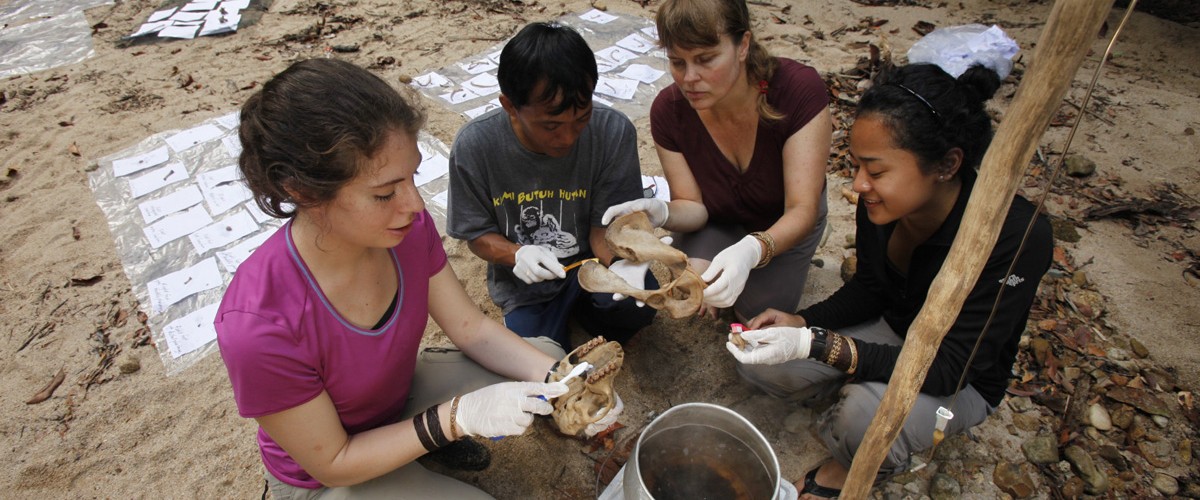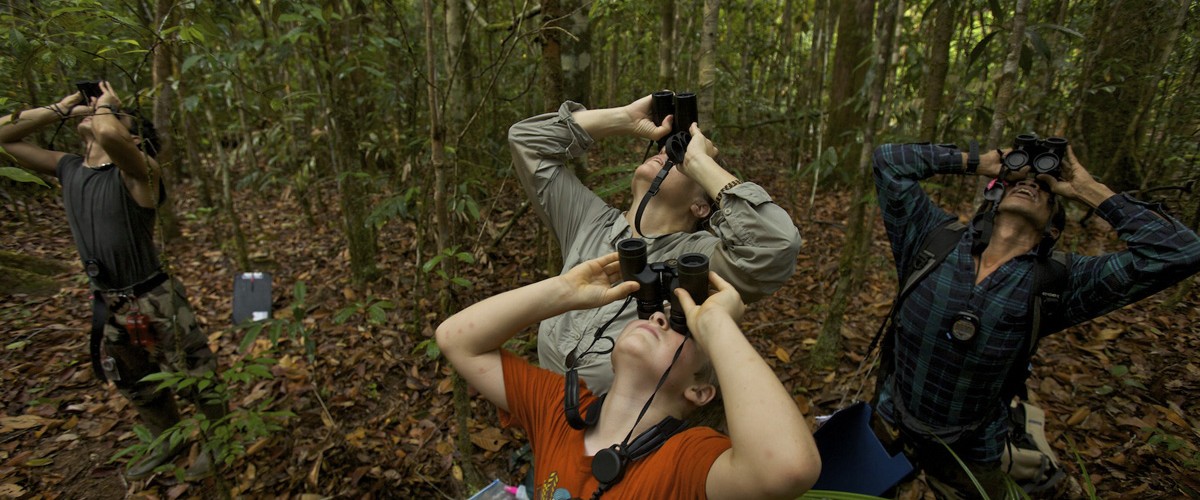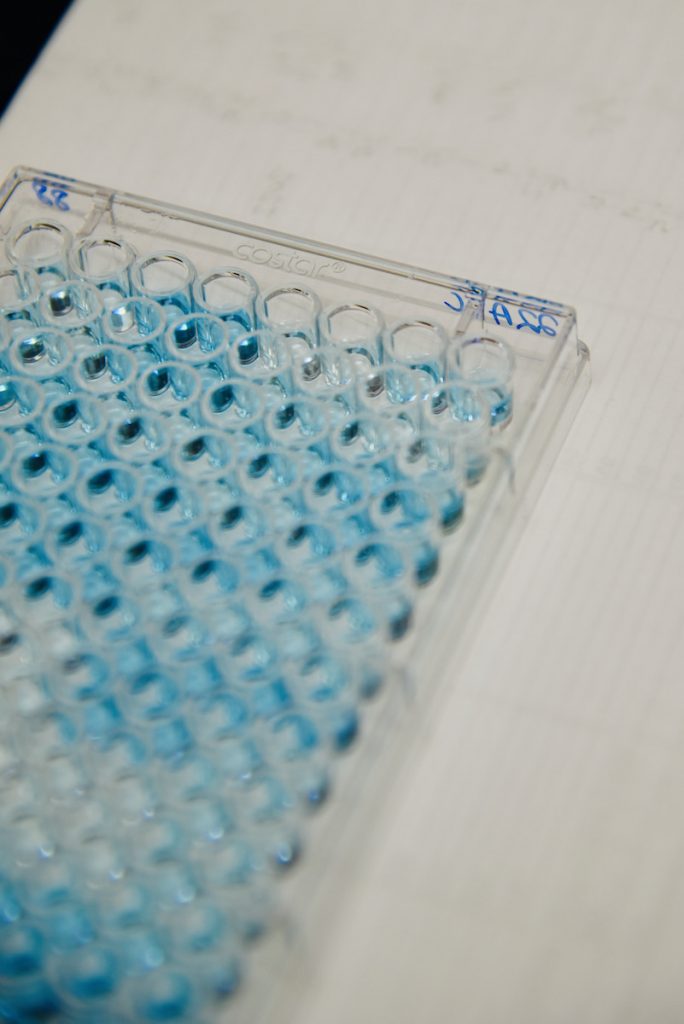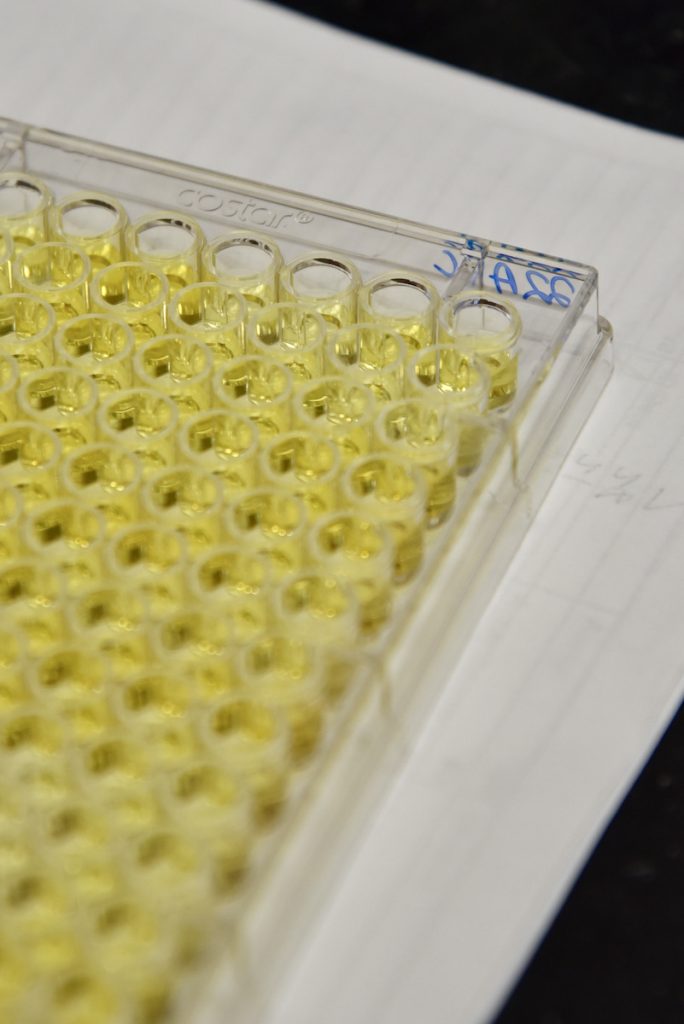By Faye Harwell, PhD, Recent Boston University Graduate
As my fellow lab mates headed to Gunung Palung National Park last summer, I made my way to Virginia with several coolers of orangutan urine in tow. Instead of trekking through the jungle in search of wild orangutans, I would be studying orangutan physiology from the comfort of a wildlife endocrinology laboratory at the Smithsonian’s Conservation Biology Institute.

Endocrinology is the study of hormones. Many people get endocrine analyses done when they are trying to get pregnant or experiencing kidney or thyroid issues. Just as hormones are important to human physiology, they are similarly informative of orangutan health and reproduction. Hormones are molecules produced by endocrine glands that coordinate physiological processes within the body. Lucky for primatologists, orangutans and the other great apes are closely related to humans meaning that endocrine analyses developed for human studies often work on the other great apes.
Hormones can be studied using a number of biological samples. These include blood, urine, feces, saliva, and even hair. Each of these different samples can be analyzed to examine hormones or biomarkers at various time scales. Blood and saliva samples convey information about a human or animal at the moment of collection. Urine and fecal samples, on the other hand, show cumulative levels of hormones for several hours prior to urination or defecation, respectively.
Because orangutans are largely solitary and arboreal, they can be a challenging species to study in the wild. With creative non-invasive methods, though, we are able to study nearly all aspects of their biology. Just as there is a chance of getting pooped on by a seagull at the beach, orangutan researchers are continually at risk of getting showered or pelted by pee and poop as these tree-dwellers go about their business high up in the trees. We have learned to take advantage of our position on the ground as researchers, though.
We collect orangutan urine either by preparing tarps on the ground for a void to fall on, or by positioning a plastic bag on a forked fishing rod under the stream of urine. As for the poop, we simply search for it off the ground if it hasn’t already clocked us in the head (not an uncommon event).

In the field, we test urine for the presence or absence of ketones. Ketones are released into blood and eventually urine when the body is breaking down fat for energy (ketosis). For females, we can also run a pregnancy test — the same test women all over the world use! Lastly, we measure the density of the urine (specific gravity), which we use to index urine samples of different concentrations. Once we are done with all of these tests, we place our samples in freezers powered by generators until they can be brought out of the forest. Freezing urine samples can preserve samples for several years. Our most recent set of samples underwent a transatlantic journey in order to make it to the United States.

Urine from humans and other mammals contain water, salts, and urea along with hormones and other biomarkers that are excreted from the bloodstream. Urine provides a wealth of information related to an animal’s overall health, reproductive state, and metabolic functions. In this sense, urine from any wild animal is like liquid gold to researchers! To measure hormones and biomarkers in urine, we run tests called immunoassays. Enzyme immunoassays utilize the mechanisms of our body’s antibodies, which bind to foreign substances, such as bacteria and viruses. During an enzyme immunoassay, reagents are added that will eventually result in a color change depending on the concentration of antibodies bound to the hormone/biomarker of interest. For the tests that primatologists typically run, the color change is from blue to yellow.
In our most recent set of samples, there were some very cool findings. For instance, we documented the hormonal changes that the orangutan Walimah underwent during her pregnancy with Winnie. We also looked at the testosterone levels amongst unflanged and flanged males.
Endocrine lab work certainly does not involve the numerous physical and mental challenges of carrying out fieldwork, but it can be intense work at times. The tests require extreme focus and organization. Prior to starting a plate, you need to record your samples on paper or excel spreadsheets. At one time, you might be running as many as 42 samples, since that is how many duplicate samples can fit on a single plate. Reagents must then be added at specific times. So, if you miss a reagent or add something to your plate at the wrong time, you may need to start all over. Even after you get the results of your analysis, you must then look at the coefficient of variations (CVs) of your duplicates and redo any samples with high CVs. Lastly, you must record the final quantities along with how much you diluted the urine sample (dilution factor), which will be used in calculations for the final value.
Endocrinology is just one example of how primatology takes place beyond the jungle. Primatology is an inter-disciplinary field that intersects with many other STEM fields. Our research on wild orangutans intersects with a wide span of fields, such as genetics, microbiology, and conservation. It requires the collaboration and coordination of many people’s time and effort. From collecting the sample in the field to monitoring the shipping progress of the samples (on dry ice!) to obtaining grant money to analyze the samples, endocrine studies of wild primates are a collective effort requiring many people’s involvement. The somewhat laborious process is worth it, though. By working with experts in other STEM fields like endocrinology, primatologists are able to more deeply understand the relationship organisms have with their environment.
Management of Cabang Panti Research Station is conducted by the Gunung Palung National Park Office (BTN-GP) in collaboration with GPOCP/YP. Scientific research is carried out in conjunction with the Universitas Nasional (UNAS) and Boston University.
